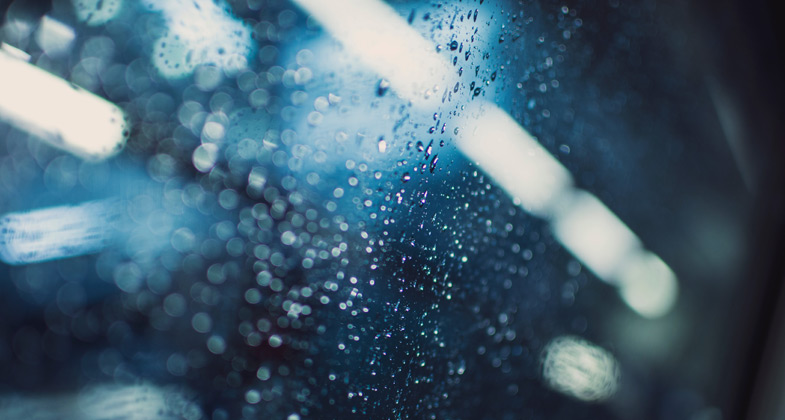Polycarbonate Condensation Tips

Updated November 2022.
More and more of our customers are using secondary glazing to insulate their homes in an affordable way, which in turn helps insluate a house and keeps energy bills down.
New - watch an instructional video on how to fit secondary glazing panels with magnetic tape.
Polycarbonate is hydroscopic and so can absorb moisture from the atmosphere and installations depend on ventilation to avoid saturated air in the cellular structure which will condense under appropriate conditions.
The bottom of the sheets have breather tape fixed to them to allow any moisture to evaporate out. It is important that the tape is fitted and the sheet closure is securely fixed to ensure this process works and excessive moisture is not retained in the roof.
There can be a tendency during the first few months for some condensation to appear but after a settling down period it will disappear again. If there are unfavorable conditions this may take a longer time. e.g . high moisture laden atmosphere, large temperature differentials between inner and outer surfaces of the sheet, low roof pitch, poor ventilation and a North facing conservatory. You may wish to contact us about the Omegabuild polycarbonate roofing panels range.
If you get a period of dry weather removing the sheet closures and tapes and letting dry air circulate within the sheet will speed things up.
If the moisture is a very fine misting of the inside surface it could be genuine condensation. If it is larger discrete droplets it is more likely to have occurred due to problems caused by installation.
If it is caused by problems at installation it could be:
- Damage to the tapes where moisture is getting in
- The seals around the glazing bars/flashing not being water tight
- Moisture that was let in during fitting that is now trapped.
Once you have identified and stopped the water ingress you need to give the polycarbonate time to dry out. Do NOT use a hairdryer or any other appliance to dry the polycarbonate as you will damage the polycarbonate.
Opal polycarbonate is a good option if you think your roof will be prone to condensation as it is opaque.
How do you reduce condensation in multiwall polycarbonate roofing sheets?
These practical tips and advice will help:
- Sealing tape not fitted at the top of the slope can cause excessive air movement and permit moisture ingress. More obviously, invariably where the top of the sheet is not sealed insects and airborne dust will get in.
- To be effective the sealing tape must be applied without creases as this permits air access to individual sheet cells. This can allow dust or moisture to accumulate. Running a thumbnail along the tape on the top and bottom surfaces of the sheet easily eliminates creases.
- Sheets need to breathe as changes in temperature expand and contract the air in the cells. Sealing tape at the bottom and top of the sheet prevents this from happening and can contribute to conditions that encourage mould growth within the sheet.
- Breather tape fitted with creases at the bottom of the slope can permit excessive air movement or admit dust as with top end sealing tape.
- Omitting the breather tape from the bottom of the sheet allows moisture laden air, insects and airborne dust to enter the sheet. Over a short period of time these will accumulate and become unsightly. The same consequences are true for individual cells if the breather tape is torn or holed. A 2mm-diameter hole is big enough to allow insect entry.
- A U-section profile in polycarbonate, aluminium or PVC must be fitted as an added protection for the breather tape. These are usually supplied in 2.1m lengths and require cutting around the ends of the glazing bar cap. Inaccurate cutting will give potential for bad sealing and water ingress. The closure must be pushed home fully.
- It is bad practice to butt joint the closure in the width of the sheet as this creates another potential water ingress point. It is best practice to make joints at the glazing bar positions as the quality of joint is not so critical at these points.
- If the joint between the U profile and the top face of the polycarbonate sheet is not sealed with silicone then water can seep into the closure and perhaps eventually, by soaking the breather membrane, into the sheet giving the usual condensation problems. It is necessary to run a small bead of sealant along the top edge of the closure to prevent water seepage.
Read more of our tips on reducing condensation and polycarbonate creaking.
You may also like to use our polycarbonate sheet measurement converter tool.





 Dear
Omegabuild, thank you very much for your delivery - swift
service - and good customer care -
Dear
Omegabuild, thank you very much for your delivery - swift
service - and good customer care -  © Copyright 2007 - 2024
© Copyright 2007 - 2024